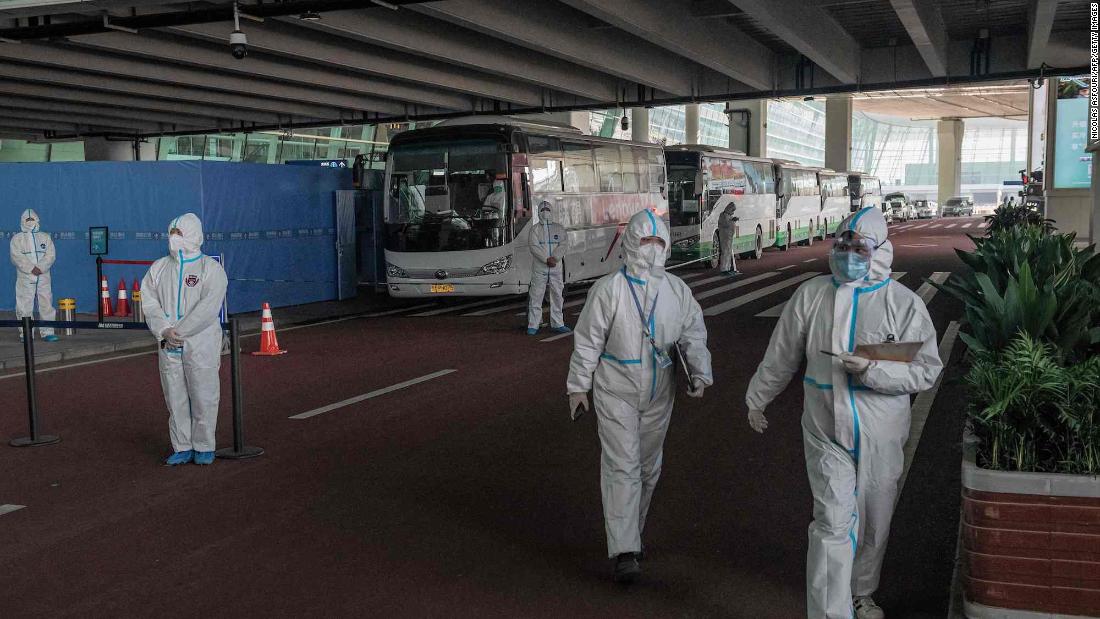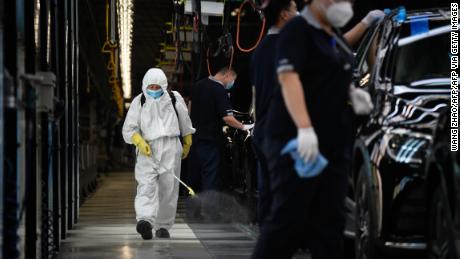Since November 2020, travelers flying into China have to show negative results for an IgM antibody test, and a PCR test, before they will be allowed to enter.
The scientists in question are being retested, and had previously been tested and found negative for coronavirus multiple times, the organization said, adding that those scientists who have been able to travel to China, “will begin their work immediately during the 2 weeks quarantine protocol for international travelers.”
At a regular press conference Thursday, Chinese Foreign Ministry spokesman Zhao Lijian said the country “will strictly follow the relevant epidemic prevention regulations and requirements, and provide corresponding support and facilities for WHO experts who come to China to carry out international cooperation on tracing the origin of the virus.”
Asked about the two scientists denied entry, Zhao would not comment, instructing reports to ask “the relevant authorities.”
State broadcaster CGTN reported Thursday that the WHO team “underwent both throat swabs and serum antibody tests at the airport” upon arrival to the country.
Delayed trip
“I am very disappointed with this news,” said WHO Director-General Tedros Adhanom Ghebreyesus. “I have been in contact with senior Chinese officials and I have once again made clear that the mission is a priority for WHO and the international team.”
Tedros added the WHO was “eager to get the mission underway as soon as possible” and that he had been given assurances that Beijing was speeding up the internal procedure for “the earliest possible deployment.”
That deployment began this week, as the majority of the team arrived in Wuhan, though they will be limited in what they can do as they finish a mandatory two-week quarantine.
Marion Koopmans, a Dutch virologist who heads the Erasmus Medical Centre’s Department of Viroscience in Rotterdam and is part of the investigation team heading to China, said earlier this month that they were “ready to go.”
Koopmans said that they have been told nothing is off limits while in China and said the team will be working in collaboration with their Chinese colleagues “looking at the data, talking to people with expertise, and concluding from what’s been done, and what can be built on.”
She said it was important to understand the origins of how the virus made the leap to humans because there is “no country that doesn’t have risk of disease emergence. It’s something we need to understand, so the whole world can prepare.”
“We really need to have patience and not judge. It’s meticulous work, it will take time,” Koopmans said.
Political tensions
The United States and Australia have led the charge in criticizing China’s handling of the initial stages of the pandemic, accusing Beijing of downplaying its severity and preventing an effective response until too late.
Foreign Minister Wang Yi praised China’s anti-pandemic efforts at home and abroad, saying that the country “launched an emergency global humanitarian campaign” and “helped build consensus on a global response to Covid-19.”
CNN’s Beijing bureau contributed reporting.



